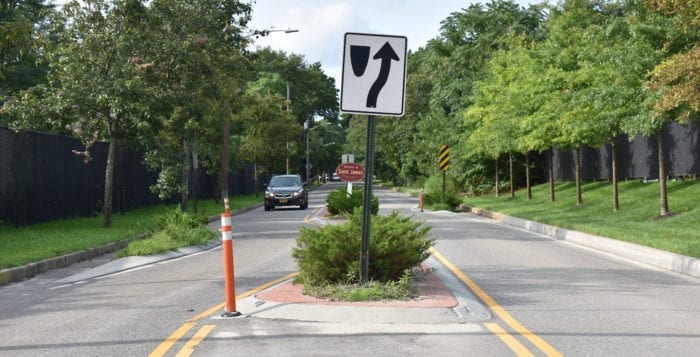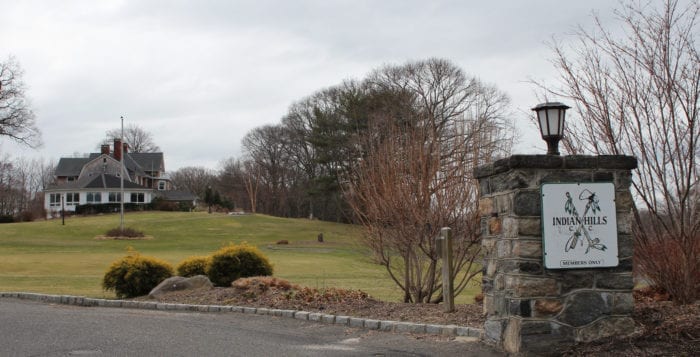First-time political candidate Dan DeBono said there are two different kinds of Republicans. One supports the little guy, and the other only helps the rich get richer.
“There are corporate Republicans and then there’s, like me, middle-class Republicans,” he said. “Corporate Republicans will seek to apply all government power to help conglomerate corporations… enrich the big guy and hope that trickles down to the small guy. Middle-class Republican’s vision of leadership is creating an environment where the middle class can thrive.”
“There are corporate Republicans and then there’s, like me, middle-class Republicans.”
— Dan DeBono
DeBono hopes to bring his vision to the U.S. House of Representatives for the 3rd District, challenging incumbent Congressman Tom Suozzi (D-Glen Cove) on the Republican party line for the seat this November.
His campaign focuses on middle-class issues due to his upbringing. Born in 1968, he grew up in Northport and graduated from Northport High School. DeBono then attended Holy Cross College in Worcester, Massachusetts on a Reserve Officer Training Corps scholarship that allowed him to join the U.S. Navy SEALs after graduating with a bachelor’s degree in mathematics. The candidate spent four years as an officer in the Navy serving overseas during the Gulf War and U.S. and NATO’s intervention in Bosnia.
After serving, DeBono went to The Booth School of Business at The University of Chicago where he obtained a master’s degree in business administration. He spent the next 20 years in the finance industry. DeBono became involved in the local politics as a committeeman for the Town of Huntington’s Republican Committee and provided financial advice to the presidential campaigns of Mitt Romney (R) and Rudy Giuliani (R).
The Republican candidate said he sees a host of challenges facing Long Island stemming from regulation, taxes and infrastructure problems. It’s hit a breaking point where he says businesses and people do not want to stay here. Given the high cost of living, he sees more and more young people deciding not to stay on the island.
“It’s too expensive to live here and raise a family.”
— Dan DeBono
“It’s too expensive to live here and raise a family,” DeBono said. “The balance between income and cost of living has gotten so out of whack that generally young people are not returning after college.”
He wants to put pressure on both the federal and state government to supply funds to ensure the Long Island Rail Road is overhauled. DeBono also supports plans to cut small-business regulations and reduced state income taxes to help alleviate Long Island’s high cost of living.
While he largely agrees with cutting taxes, the challenger said he would not have voted for the 2018 federal tax cuts simply because the amount of allocated for individuals in lower tax brackets was too small and the duration was too short, only going until 2025. He also said the loss of state and local tax deductions will have a negative impact.
In his campaign, DeBono points to corporate Republicans as those who think of large businesses first and top-down economics whereas he wants to strengthen Long Island’s economy by building up the middle class. DeBono is campaigning on a platform of specifically targeting corporate mergers and consolidations, which he said creates anti-competitive monopolies and oligopolies, as well as targeting regulations that hinder new businesses rising up to compete.
“Industry after industry have concentrated down into three to four players. This is a huge contributor to the destruction of the middle class.”
— Dan DeBono
“The same pattern of consolidation has occurred in nearly every industry in the United States,” DeBono said. “Industry after industry have concentrated down into three to four players. This is a huge contributor to the destruction of the middle class.”
On other national issues, DeBono said he believes in strong borders and supports efforts to build a wall, or barrier, along the U.S.-Mexico border. The Republican candidate also said he believes health care prices are crippling America’s middle class and he would prefer a market-based solution — but did not rule out a national single-payer system.
DeBono strongly believes in a free and competitive market, but he also supports unions.
“A robust free market will always form the most reasonable and durable form of job protection,” DeBono said. “We have structural issues that must be addressed first before those protections can kick in. At this point in the cycle unions are more important than they’ve ever been.”
DeBono is holding an open house at the Huntington American Legion Post 360, located at 1 Mill Dam Road, Sept. 17 at 6:30 p.m.
















